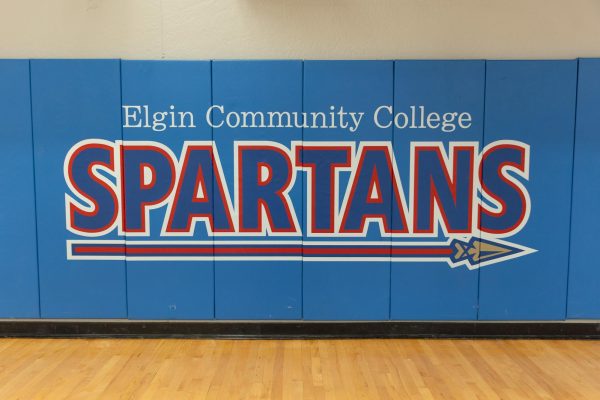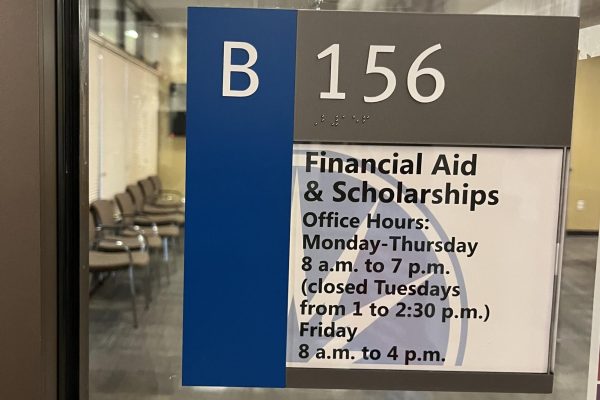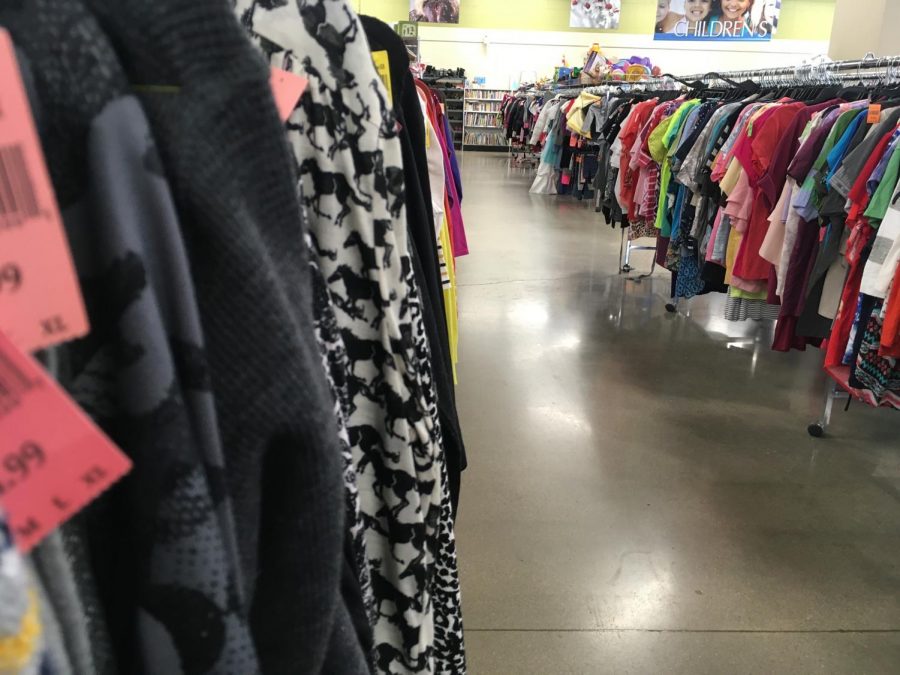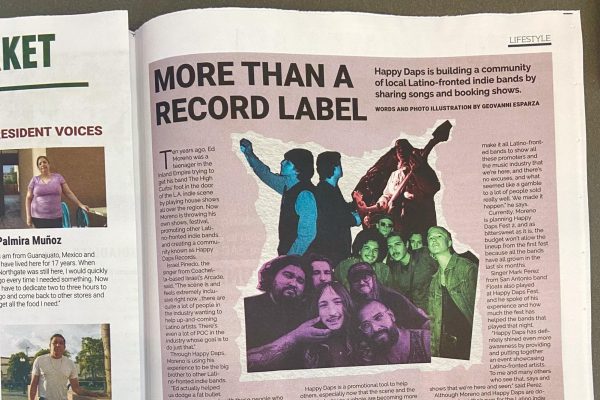As thrifting becomes trendier, people who need to thrift can’t afford to
Goodwill, along with other thrift shops, have recently been raising prices. This aisle shows clothes with pink price tags.
February 1, 2020
How many times have you walked into a Goodwill or Salvation Army? How many times have you walked into a Forever 21, Zara or H&M?
Likely, you’ve probably shopped at the likes of Forever 21 more often than you’ve thrifted at Goodwill.
But this is rapidly changing. According to the Berkeley Economic Review, because young people are increasingly more concerned with climate change, this affects their economic decisions. So, instead of buying clothes from fast fashion enterprises, young people are becoming more and more likely to thrift their clothes, which is more sustainable and ethical.
On paper, this looks good. I’ve thrifted some of my favorite clothes, and it feels good knowing that I’m supporting a more ethical industry.
But that’s beginning to change, too. Partly because of the influx of consumers, thrift shops have actually increased their prices, spurring countless blog posts, and making it harder for people who need access to cheap clothing to afford it.
Stores like Goodwill accept donations, so the clothes sold there are not always in mint condition. Specifically, name brand clothing is priced higher even when it is only in fair condition.
While only having to pay, for example, $20 for a name brand jacket or shoes seems like a good deal to me, (while also being more sustainable), that jacket or pair of shoes isn’t there for me. It’s there for the new mother that’s been out of work, or for the family who just can’t catch a break.
With Goodwill becoming yet another trendy shop for teenagers and hipsters to raid, what truly belongs to the poor? What once was a reliable place for the lower class to shop for affordable clothes is turning into an expensive trend.
Despite the ethics behind the trend of thrifting, it’s simply not fair.
The economic burden on the working poor not being able to effectively shop at a store like Goodwill is a bigger problem than me wanting to shop there – for ethical purposes or not.
While fast fashion stores are not an ethical alternative to thrifting, there are other options: Plato’s Closet is a secondhand boutique that only takes name brand clothing, and plenty of charities are willing to take donations without marking them up.
While I will miss raiding the racks at Goodwill to find hidden gems, the trend is only hurting the people who don’t have many other options.






















Ellisia • Mar 28, 2022 at 12:36 pm
Even middle class people Are finding the prices to high for them to afford you can find things cheaper at Ross and walmart clearance racks thrift stores are pricing items way to high and need to remember that these were given to them for free to help people in need
Linda Wiesner • Jan 30, 2021 at 11:04 am
Hello Allison,
I enjoyed your article. I’m a grandmother that has always shopped at Goodwill. When my sons were young I did GW and rummage sales to find things. When my mother was aging I took her to GW all the time. Her dollars went much further.